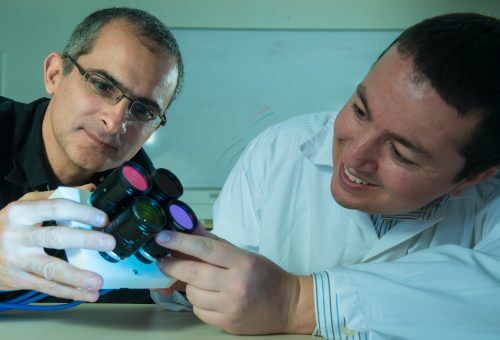The study was carried out by researchers from Ben-Gurion University. BGN Technologies, the university's technology company, will commercialize the groundbreaking invention

New software developed by researchers at Ben-Gurion University allows ordinary cameras to take video and still images Hyperspectrality Much faster and cheaper than the technologies available in the market today.
The innovative software captures the spectral signature of each pixel in the image - a significant improvement over existing spectral technology, which can only measure a certain point or timeline. The software also allows the creation of hyperspectral video that collects information about objects in motion.
The software can be installed in existing cameras, including cameras in smart phones, and in fact turns them into cheap and fast hyperspectral cameras.
Hyperspectral cameras currently on the market capture the full electromagnetic spectrum. Possible uses of the technology include diagnosis and analysis of types of materials and their composition and even the ability to identify changes in the composition of the material, such as identifying contaminants in liquids such as water or oil. But these cameras are expensive and cumbersome, and shooting each frame sometimes takes up to a minute.
According to Professor Ahed Ben-Shahar, founding director of Institute for Computational Vision and a head Department of Computer Science At Ben-Gurion University, "While the existing technology tries to capture the full electromagnetic spectrum, we have shown that the length of the sun's rays in nature covers only a small part of this spectrum (because the sun's radiation is relatively stable and the amount of materials in the world is finite). Through computational research, we were able to reconstruct hyperspectral imaging from the RGB color spectrum, which is the spectrum used by standard cameras. In most cases, this imaging provides hyperspectral documentation at a sufficient level.
The hyperspectral imaging market is expected to reach $12.7 billion by 2021, according to a report by Markets and Markets Released in January 2017.
"The researchers at Ben-Gurion University are conducting leading research in the field of computational vision and electro-optical engineering," says Neta Cohen, CEO of BGN Technologies, Ben-Gurion University's technological commercialization company. "Much of this research is commercially applicable."
BGN Technologies has registered a patent application for the invention and is working together with the researchers to find a significant commercial partner for product development.
According to Beaz Arad, a doctoral student in the Department of Computer Science and a co-inventor in the project, "Our technology will make it possible to increase the use of hyperspectral features and apply them in new areas, such as improving the color and light sensitivity of normal photography."
